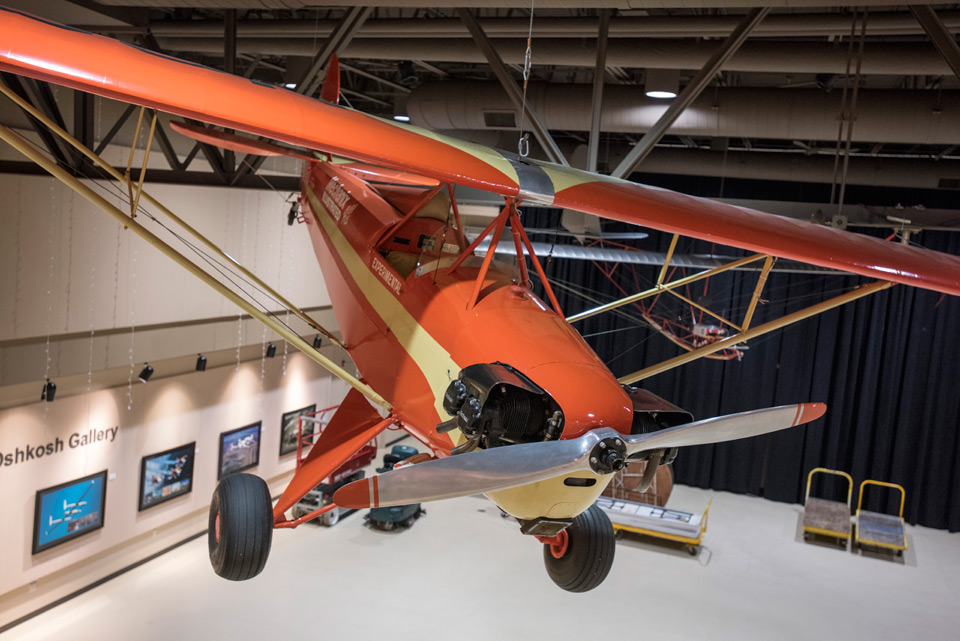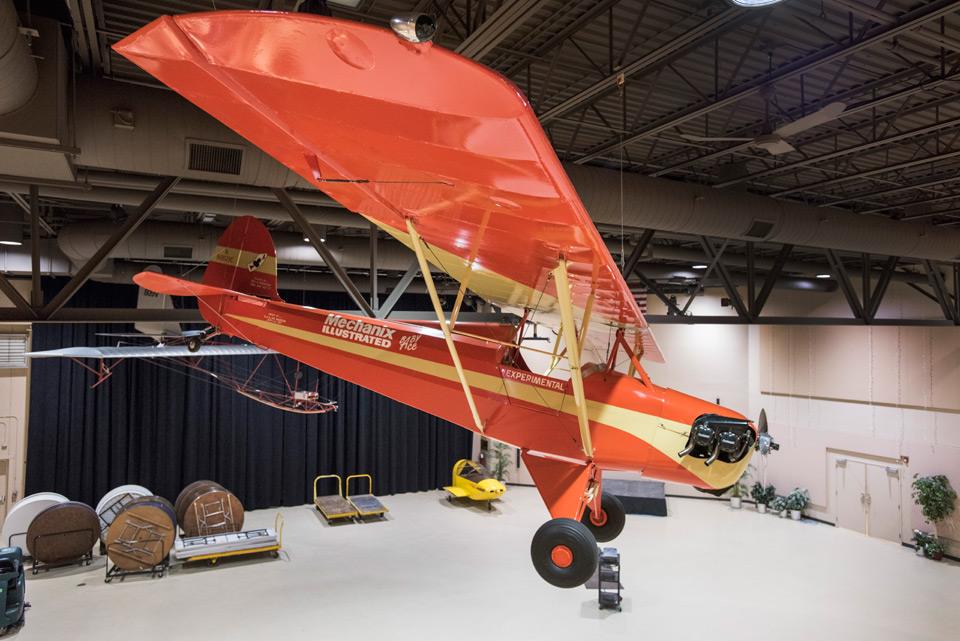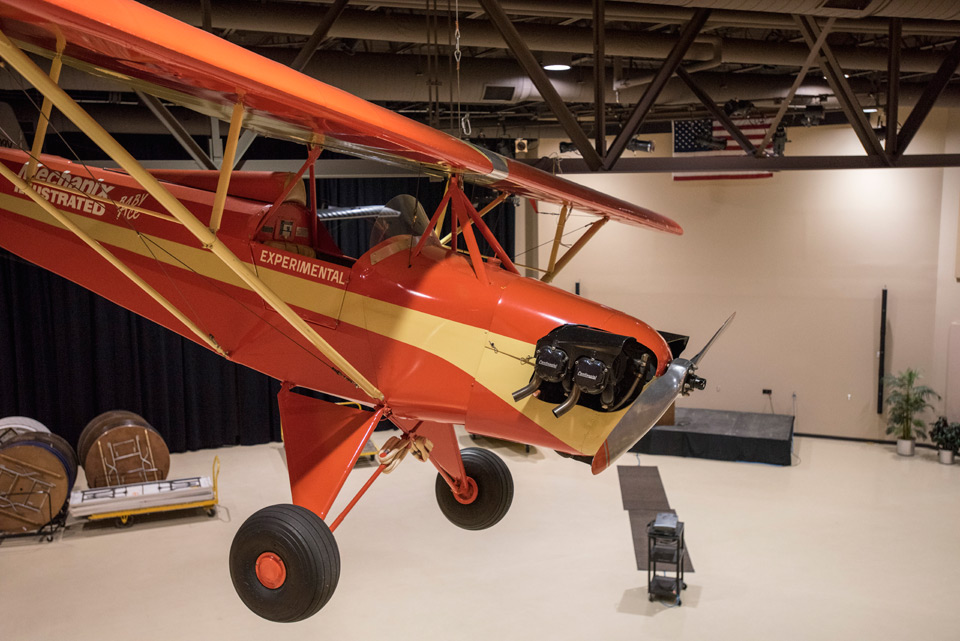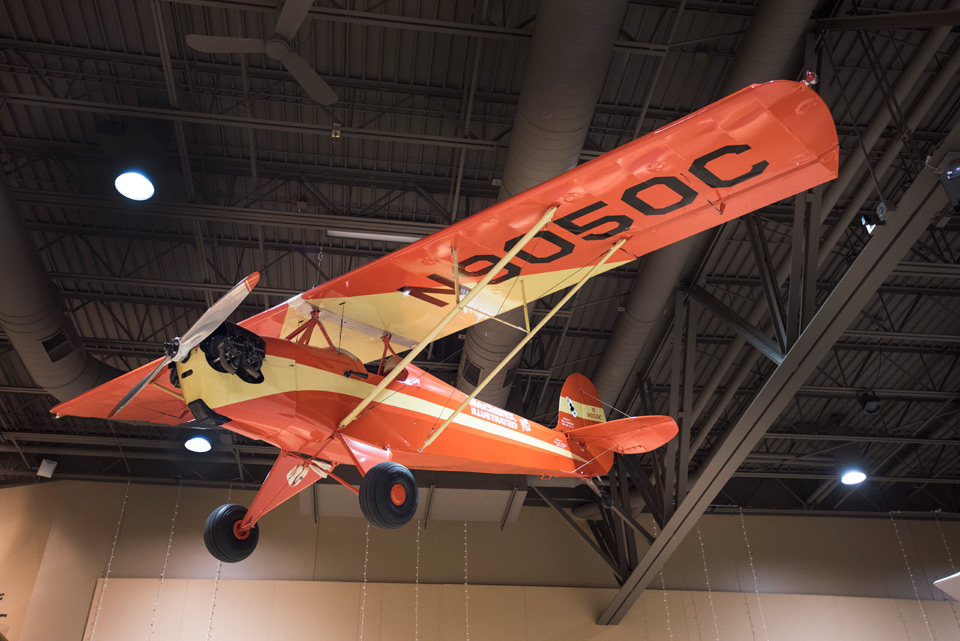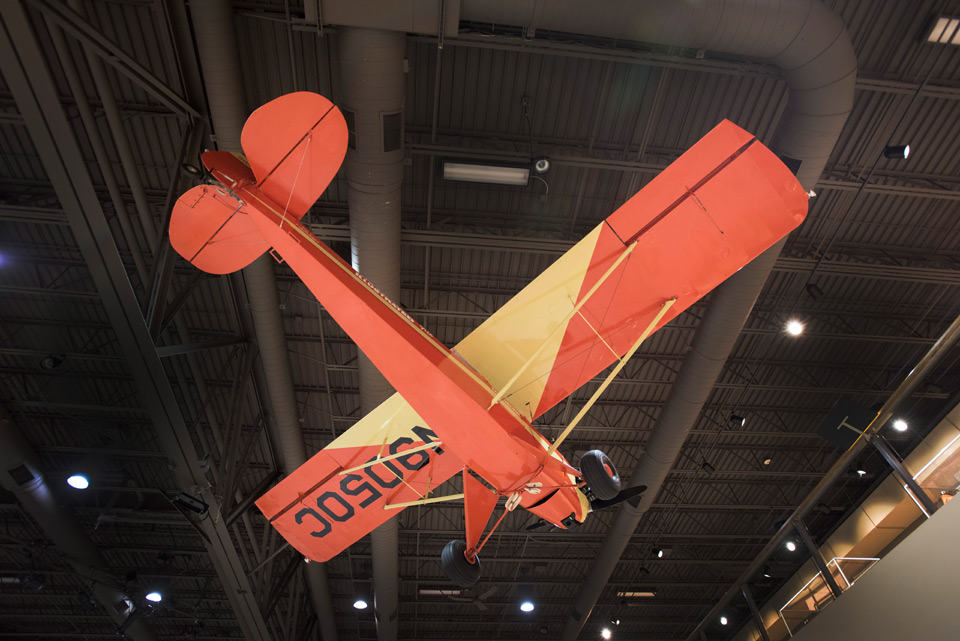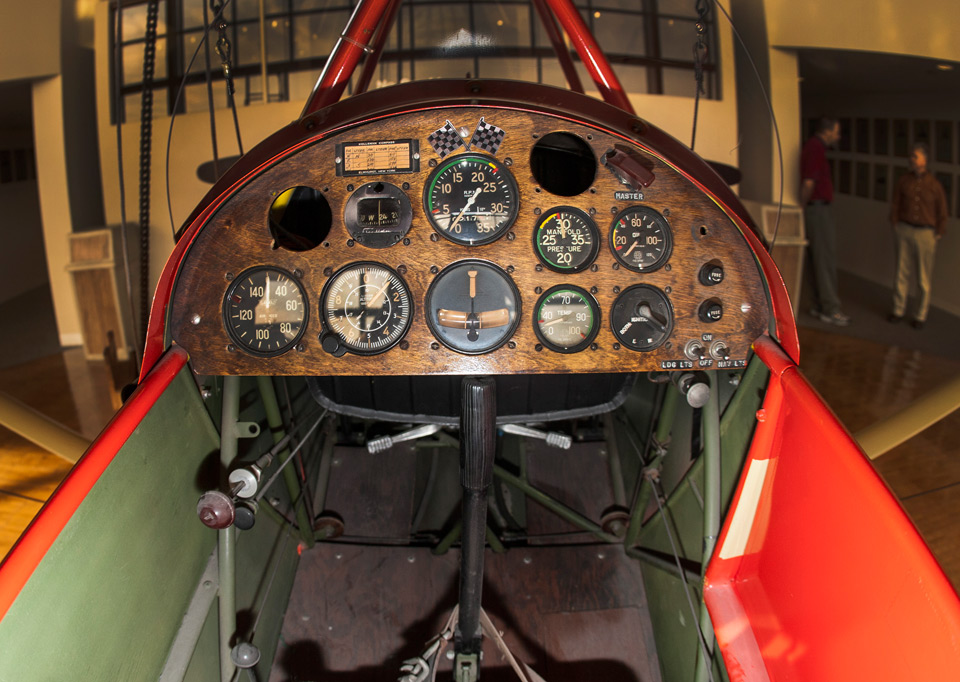1955 Corben Mechanix Illustrated Baby Ace Model C – N9050C
Location: Founders’ Wing
"There’s a red-hot revival taking place in the used-to-be-costly hobby of private flying."
That’s the first sentence in the last paragraph of Bill Parker’s “Editor’s Workbench” column in the May, 1955 issue of Mechanix Illustrated magazine. When it hit newsstands that spring, it changed EAA, and sport aviation, forever. There was a Corben Baby Ace on the cover, and the headline read simply, “Build this plane for under $800 including engine!” The magazine introduced the first of a three-part article series written by EAA Founder Paul Poberezny that methodically stepped the reader through the building and flying of a homebuilt airplane.
Associate Editor John Scherer had written a letter proposing the article series, and Paul quickly agreed, though he’d originally tried to recruit fellow EAA members that he thought might be more qualified to do the writing. In the end, though, Paul and his wife Audrey accepted the challenge. Paul worked with Stanley Dzik, EAA 15, to modify the original Baby Ace design and draw up new plans to meet the CAA standards of the day. The updated version became the Baby Ace C.
This wasn’t the first time Paul had worked with Mechanix Illustrated. A year earlier, in March, 1954, they published a piece called “They Build ‘Em and Fly ‘Em” which had also generated a lot of interest in EAA and the homebuilding movement.
“Too many private flyers have found, through the years, that in order to participate in their beloved sport, they must possess above-average financial means…if…private aviation is to get out of the doldrums it is imperative that the average workingman be brought into the picture. This can be done only by making flying less costly. Tackling the problem in a practical manner, a group of ambitious pilots and mechanics have formed the Experimental Aircraft Association with headquarters in Milwaukee, Wis.”
Flying was expensive, or so it seemed. In 1956, just a year after the Mechanix Illustrated article series, Cessna introduced the 172 at a retail price of $8,700, while, in 1958, a new Ercoupe cost nearly $7,000. That sounds cheap until you realize that, at that time, the average price of a home in the U.S. was just $10,000.
Then, along comes Paul Poberezny with this crazy idea that you could own and fly your own airplane for less than 10% of the cost of your home. The whole process from materials selection to workshop planning through building, licensing, and flying was laid out in 30 well-illustrated pages across three magazines that cost just 25 cents each, barely $2 today. Granted, if you wanted the full-size plans, that would set you back another $20, but it was still a bargain.
Paul’s articles struck a chord with frustrated flyers across the country. With this series of articles, he flipped a switch in the minds of thousands of people. Flying was unaffordable and inaccessible and then, almost instantaneously, it wasn’t. All of us struggle to find new ways to get people building and flying, but Paul knew that the solution was really pretty simple: show them that it’s possible. He didn’t worry about selling them on the idea of flying; he just showed them that they could do it. There was no preaching, just teaching.
Did the skies of the U.S. turn black with Baby Aces? No. But the idea of homebuilding caught hold, and it brought sport aviation, not to mention EAA’s membership numbers, along with it. At the end of 1954, EAA’s total membership was about 700. Just one year later, membership had more than doubled to 1,450, and would reach more than 5,000 by the end of the decade, and 170,000 by the end of the century. The little homebuilding club in Milwaukee was now an international organization.
As Paul wrote at the time, “The article on the Baby Ace presented in the May issue of Mechanix Illustrated magazine has caused quite a stir around the household here. The postman is getting an ‘aching back’ and I got writer’s cramp. I have never seen so many letters from fellows wanting to get into the air and I am happy to see many of them joining the EAA.”
Excerpted from “It’s an Ace, Baby”, featured in the June, 2015 issue of EAA Sport Aviation magazine.
Aircraft Make & Model: Mechanix Illustrated Baby Ace C
Length: 18 feetWingspan: 25 feet, 7 inches
Height: 6 feet, 7 inches
Empty Weight: 569 pounds
Gross Weight: 828 pounds
Crew: 1
Powerplant: Continental C-65
Horsepower: 65 hp
Cruise Speed: 85 mph
Maximum Speed: 130 mph

